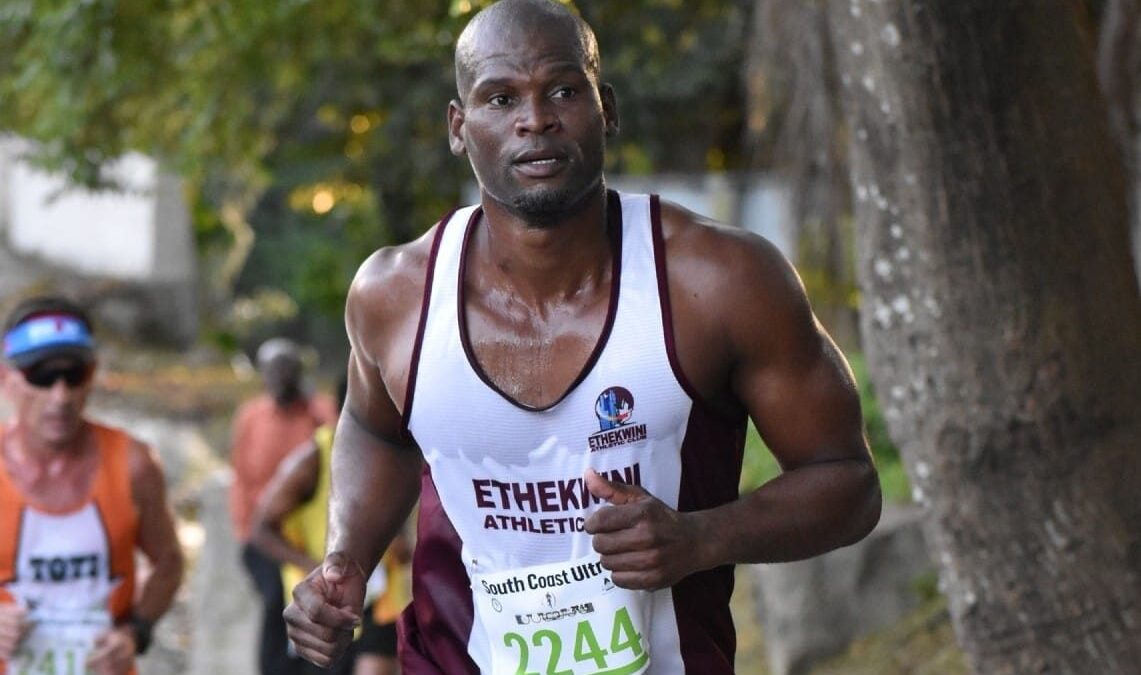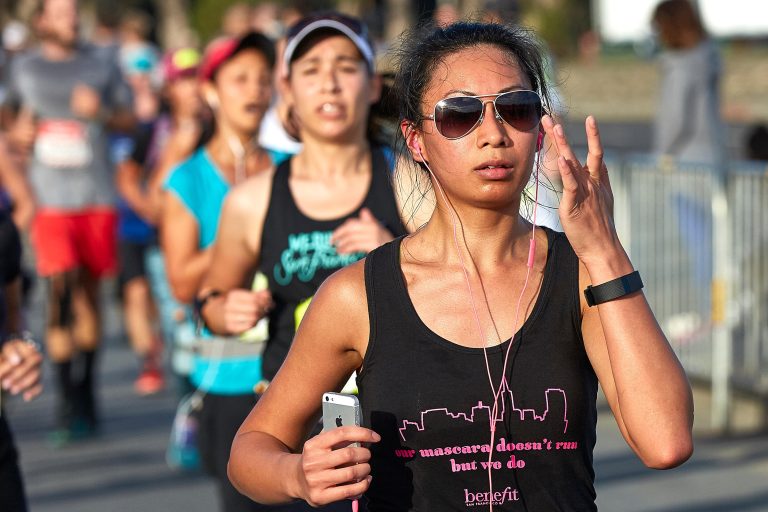How Many Marathon Runners Die
It’s rare for marathon runners to die during races. However, fatalities can occur due to underlying health conditions.
Many marathon organizers prioritize safety measures to prevent such tragedies. Marathon running has gained popularity in recent years, with more people participating in races worldwide. While the majority of runners complete marathons without incident, there have been cases of fatalities during races.
This has raised concerns about the potential risks associated with long-distance running. It’s essential to understand the factors that contribute to these incidents and how they can be prevented. We will explore the topic of marathon runner fatalities, providing insight into the causes and preventive measures to ensure the safety of participants.

Credit: news.sky.com
Challenges Of Long-distance Running
Taking on long-distance running entails risks, particularly for marathon runners. The incidence of fatalities among marathon participants remains a concern due to the strenuous nature of the sport and underlying health factors. Vigilance in training and medical assessments is essential to mitigate these risks.
Long-distance running, such as marathon races, presents numerous challenges to athletes who undertake this grueling physical endeavor. Endurance, mental strength, and physical fitness are among the key qualities required to conquer the demanding nature of these races. However, the physical demands of marathons and the potential health risks associated with participating in such events cannot be overlooked or taken lightly.
Physical Demands Of Marathons
Marathons push the boundaries of human capability, demanding exceptional physical stamina and endurance from runners. These races typically cover a distance of 26.2 miles (42.2 kilometers), often in challenging terrains and varying weather conditions. As a result, participants must possess a remarkable level of cardiovascular fitness and muscular strength to sustain the prolonged impact on their bodies.
The physical demands of marathons are twofold. First, the race requires a sustained, high-intensity effort that places a significant strain on the cardiovascular system. Runners must maintain a steady pace throughout, keeping their heart rates elevated for extended periods. This places increased demands on the heart and lungs, requiring them to pump oxygen-rich blood efficiently to the working muscles.
Secondly, the muscular demands of marathon running are immense. The repetitive and continuous motion of running for several hours leads to significant physical stress on the leg muscles and joints. The legs must repeatedly propel the body forward, absorbing the impact of each stride, which can result in fatigue, swelling, and even injury if not adequately trained for.
Health Risks Associated With Marathons
While marathon running is undoubtedly a remarkable achievement, it is not without associated health risks. The physical stresses endured during long-distance races can place strain on various systems within the body. It is crucial for runners to be aware of these potential risks and take appropriate measures to mitigate them.
The cardiovascular system, in particular, is subject to significant strain during marathons. The sustained high-intensity effort places a substantial burden on the heart, potentially leading to cardiovascular complications, such as heart attacks or arrhythmias, especially in individuals with pre-existing conditions or inadequate training.
Additionally, the muscular demands of marathon running can lead to muscle strains, sprains, and stress fractures. The repetitive impact on the joints and bones can result in acute injuries or chronic conditions, including tendonitis or arthritis, particularly in runners who do not prioritize proper rest, recovery, and strength training.
Furthermore, the combination of physical exhaustion, dehydration, and electrolyte imbalances can lead to heat-related illnesses, such as heatstroke or heat exhaustion, particularly when running in hot and humid conditions.
It is essential for marathon runners to prioritize their health and well-being during training and races. Adequate preparation, including structured training plans, proper nutrition, hydration, and rest, as well as regular medical check-ups, can help mitigate the potential risks associated with this physically demanding sport.
Statistics On Marathon Runner Deaths
Incidents Of Runner Fatalities
Marathon running is generally considered a safe activity, but there have been incidents of runner fatalities that have sparked concerns within the running community. Although the risk of death during a marathon is extremely low, these incidents have drawn attention to the need for safety measures and awareness.
Common Causes Of Death During Marathons
There are several common causes of death during marathons, with underlying cardiovascular conditions being a significant factor. Sudden cardiac arrest, heatstroke, and hyponatremia (low sodium levels) are among the primary reasons for fatalities during marathon events. These occurrences underscore the importance of proper health screenings and hydration strategies for participants.
Preventive Measures And Safety Protocols
Preventive Measures and Safety Protocols are crucial in ensuring the well-being of marathon runners. As marathons continue to gain popularity, it becomes imperative to implement effective safety measures to mitigate the risks associated with such endurance events.
Training And Preparation Guidelines
Proper training and preparation are essential to minimize the likelihood of adverse incidents during marathons. Runners are advised to follow a structured training program tailored to their fitness level and gradually increase their mileage to build endurance. Incorporating strength and flexibility exercises can also help prevent injuries. Additionally, maintaining a well-balanced diet and staying adequately hydrated are integral parts of the preparation process.
Medical Support At Marathons
Having robust medical support at marathons is paramount to ensuring the safety of participants. Medical professionals and aid stations should be strategically positioned along the course to provide immediate assistance if needed. Furthermore, all participants should undergo a thorough medical screening prior to the event to identify any underlying health concerns that may pose a risk during the race. A comprehensive emergency response plan should be in place, with clear communication channels established to facilitate swift intervention in case of emergencies.

Credit: www.nytimes.com
Impact On The Running Community
The impact on the running community when marathon runners die can be devastating and far-reaching. It not only affects the families and friends of the runners, but also raises awareness about the importance of safety precautions and medical support during races.
It serves as a reminder of the risks involved in endurance sports and prompts organizers to prioritize participant well-being.
Response And Support After Tragic Incidents
When a marathon runner loses their life during a race, the impact on the running community is profound. It serves as a stark reminder of the risks associated with endurance events and the importance of safety precautions. In such circumstances, the response from the community is crucial in offering support to the affected individual’s family and friends, as well as ensuring the well-being of future participants. The running community, known for its resilience and camaraderie, rallies together in times of tragedy. Runners from around the world show their solidarity by organizing memorial runs and setting up donation funds to support the families of the deceased. These events not only provide financial aid but also serve as a powerful symbol of unity and remembrance.Changes In Event Organizing
In the wake of tragic incidents, organizers of marathons and other running events are compelled to reevaluate their safety protocols and preventive measures. This leads to significant changes in event organizing, with an increased emphasis on ensuring the well-being and security of participants. One of the primary changes is the implementation of more rigorous medical screening processes. Runners may be required to undergo physical evaluations to identify any underlying health conditions that could pose a risk during the race. Medical personnel are stationed at various points along the course, ready to respond swiftly to any emergencies that may arise. Additionally, event organizers prioritize crowd control measures, employing strategies to prevent overcrowding and reduce the likelihood of accidents. This includes limiting the number of participants, implementing staggered start times, and creating wider pathways to accommodate the flow of runners more effectively. Furthermore, enhanced communication and emergency response systems are put in place. This ensures that race officials, medical personnel, and law enforcement are equipped with the necessary tools and information to respond swiftly in case of any unforeseen incidents. The use of technology, such as GPS tracking and real-time monitoring systems, allows for improved communication and better coordination during the event. As the running community continues to grow, organizers are increasingly focused on creating safe environments for participants. Tragic incidents serve as potent catalysts for change, stimulating the implementation of stringent safety measures that help prevent future loss of life. Through continuous improvement and collective support, the running community aims to create an environment where every participant can pursue their passion for endurance events with confidence and peace of mind.Ethical Considerations In Extreme Endurance Events
Balancing Personal Goals With Safety
In extreme endurance events, participants must prioritize personal achievements while keeping safety in mind.
Responsibility Of Event Organizers
Event organizers play a crucial role in ensuring safety measures are in place to protect participants.

Credit: www.runsociety.com
Frequently Asked Questions For How Many Marathon Runners Die
How Many Heart Attacks Are There In A Marathon?
Heart attacks during marathons are rare, occurring at a rate of about 1 in every 50,000 participants. Proper training and medical screenings can help reduce the risk. It’s essential to listen to your body and seek medical attention if you experience symptoms during a marathon.
Do Marathon Runners Have Heart Problems?
Marathon runners can have heart problems due to excessive strain on the heart during endurance activities. Proper training and medical check-ups are crucial for preventing and managing potential issues. Regular exercise and a healthy lifestyle help reduce the risk of heart problems in marathon runners.
What Causes Marathon Runners To Collapse?
Marathon runners collapse due to dehydration, exhaustion, and heatstroke, which can lead to muscle cramps, dizziness, and loss of consciousness.
Conclusion
While the number of deaths during marathon races may be low, it is crucial to acknowledge the importance of proper training, medical support, and awareness of personal health conditions. The safety of participants should always be a top priority, and race organizers must continue to implement strategies to minimize risks and provide immediate medical assistance if needed.
By prioritizing safety measures and ensuring comprehensive race protocols, marathon events can continue to be enjoyed whilst reducing the occurrence of unfortunate incidents.






